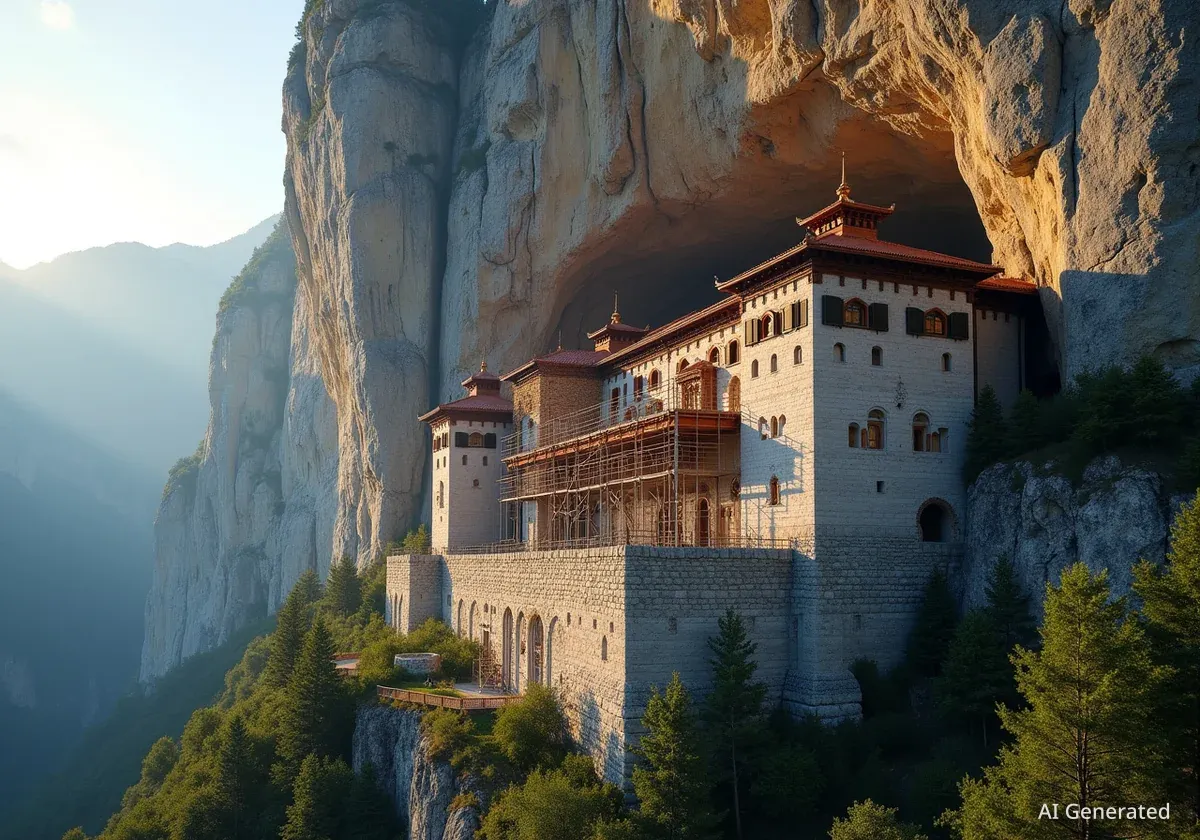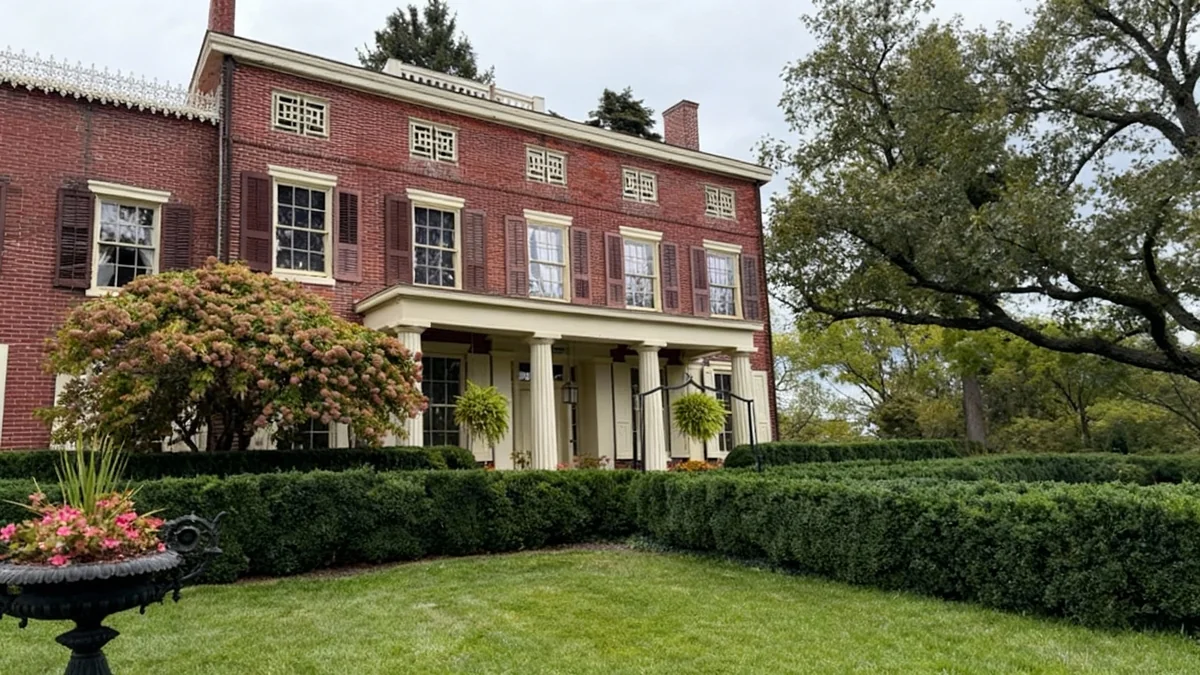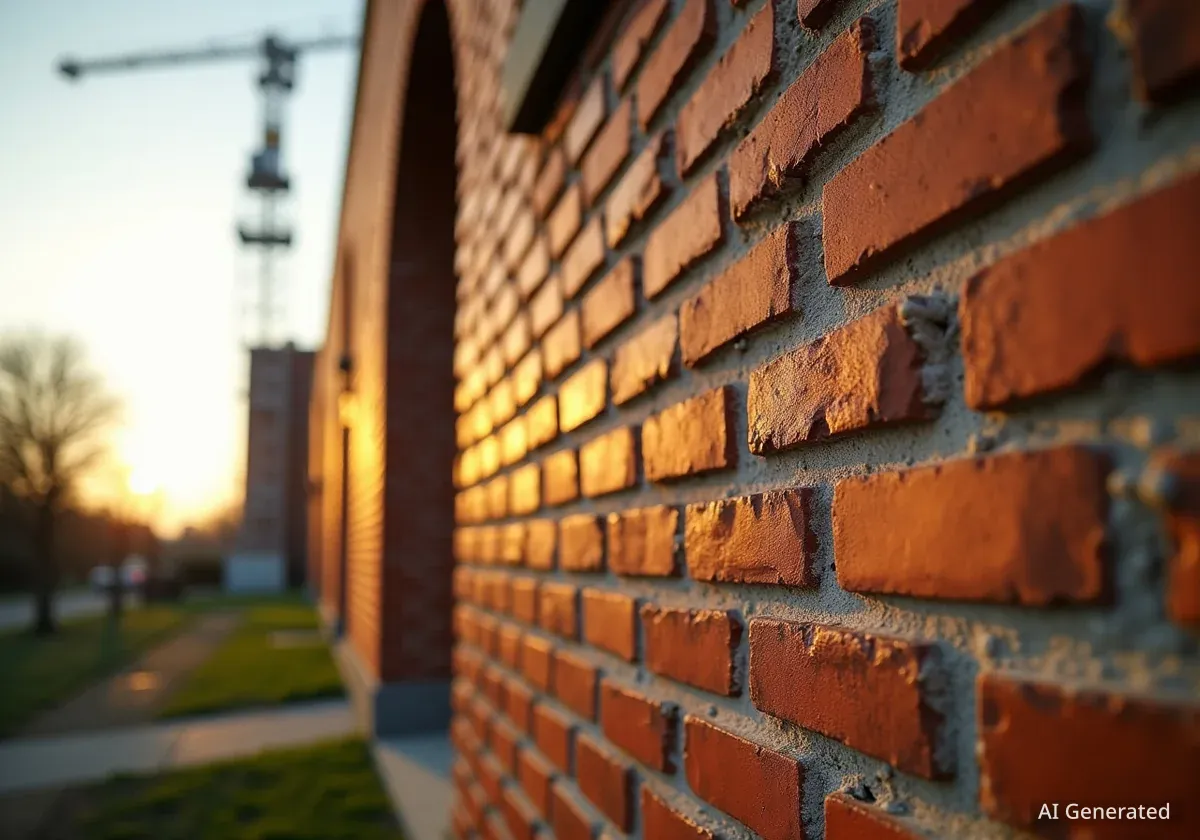The Sümela Monastery, a historic structure built into a cliff face in eastern Turkey, has undergone extensive restoration to preserve its ancient art and ensure visitor safety. Perched nearly 300 meters above the Altındere valley, the site has a history stretching back to the 4th century CE and is now a state-managed museum attracting thousands of daily visitors.
Years of meticulous work have focused on stabilizing the rock face above the monastery and restoring priceless frescoes damaged by time and vandalism. These efforts have also led to the discovery of previously unknown sections, including a hidden chapel with unique artwork.
Key Takeaways
- Sümela Monastery, founded in the 4th century, is located in Turkey's Pontic Alps near Trabzon.
- Extensive restoration included securing the cliff with steel mesh to prevent rockfalls.
- A secret tunnel and a hidden chapel with frescoes depicting heaven and hell were discovered during the project.
- Art restorers are meticulously repairing centuries-old frescoes damaged by graffiti and neglect.
- The site is on UNESCO's Tentative List for World Heritage status and is a popular tourist destination.
A History Spanning Empires
The origins of Sümela Monastery are tied to a legend dating back to 386 CE. According to tradition, two Greek monks, Barnabas and Sophronios, were guided by a vision of the Virgin Mary to a cave in the Pontic Alps. There, they reportedly found an icon of Mary and the infant Jesus said to have been painted by Luke the Apostle.
This cave became a pilgrimage site and, by the 13th century, a formal monastery was established by Orthodox monks. The complex expanded over the centuries, evolving through the Byzantine and Ottoman eras. It includes a series of chapels, living quarters, a library, courtyards, and a sacred spring enclosed in stone.
Flourishing Under Ottoman Rule
After the Ottomans took control of the region in 1461, the monastery continued to operate and even received support from the sultans. Levent Alniak, manager of museums for Trabzon province, explained that the sultans often respected important religious sites. "The sultans considered Sümela a sacred place and helped the monastery by giving the monks donations and more land," Alniak noted.
The monastery remained an active Greek Orthodox religious center until the early 20th century. Following World War I and a subsequent population exchange between Greece and Turkey in 1923, the monks departed. They buried many of the monastery's treasures, including the famed Panagia Soumela icon, which was later recovered and is now housed in a monastery in northern Greece.
Major Restoration and New Discoveries
After decades of neglect and vandalism, the Turkish Ministry of Culture and Tourism began preservation efforts in the 1970s. The most recent and comprehensive restoration project addressed a significant safety concern: falling rocks from the cliff above.
"We’ve always had a problem with falling rocks," said Levent Alniak. To solve this, industrial mountain climbers were brought in. "To prevent damage to the structures and harm to visitors, we had industrial mountain-climbers secure the cliff." The teams used steel cables and stakes to affix large sections of steel mesh netting to the rock face, a complex and dangerous task performed while suspended in mid-air.
"This ongoing restoration yielded unexpected treasures such as a secret tunnel leading to a previously undiscovered chapel."
During this work, engineers found a hidden tunnel that led them to a small, previously unknown chapel. Archaeologists believe it may have served as a defensive observation post. Inside, they uncovered dramatic frescoes illustrating themes of heaven and hell, life, and death, adding a new chapter to the monastery's rich history.
Bringing Frescoes Back to Life
A central part of the restoration is the painstaking work on the monastery's exquisite frescoes. Many of these artworks, some dating to the 13th century, were damaged after the site was abandoned. Visitors can often see art restorers carefully working on the delicate images during the dry summer months.
"For many years there wasn’t enough control here and there was a lot of vandalism," said restorer Senol Aktaş. "People wrote their names and other things across the frescos that we are trying to remove by painting over the graffiti with a style and colors similar to what the original artists used."
The Mystery of the Damaged Eyes
Many frescoes at lower levels have had their painted eyes scratched out. While some attribute this to deliberate defacement, local guide Öznur Doksöz offers another theory. "The people who live around here came and scratched their faces, especially the eyes, boiled the paint chips and drank this water thinking it would bless them," she explained, noting that this is a local story passed down through generations.
The most impressive frescoes are located inside the Rock Church, which is built into the original cave. The ceiling features large, vibrant portraits of Jesus and the Virgin Mary, while the walls depict apostles, saints, and biblical scenes, including a graphic portrayal of St. Ignatius's martyrdom.
Visiting Sümela Monastery Today
Sümela Monastery is now a national museum and one of the region's most popular attractions. Its religious significance was reaffirmed on August 15, 2010, when the first Orthodox worship service in 88 years was held. The service is now an annual event on the Feast Day of the Assumption of the Virgin Mary.
Practical Information for Visitors:
- Location: The monastery is in Altındere Valley National Park, about a one-hour drive south of Trabzon on Turkey's Black Sea coast.
- Getting There: Visitors can drive or take a guided tour from Trabzon. From the main parking area, shuttle buses transport visitors closer to the entrance, followed by a steep cobblestone path and stairs.
- Admission: The entrance fee is 20 euros.
- Hours: The site is open daily from 8:00 a.m. to 6:00 p.m.
- Travel: Trabzon is accessible via multiple daily flights from Istanbul, with a flight time of under two hours.
Visitors are advised to wear sturdy footwear suitable for walking on uneven surfaces. The weather in the Pontic Alps can be unpredictable, with a possibility of rain even in summer and snow in winter. A visit to the site, including exploring the various structures and viewing a short film about the restoration, typically takes one to two hours.





